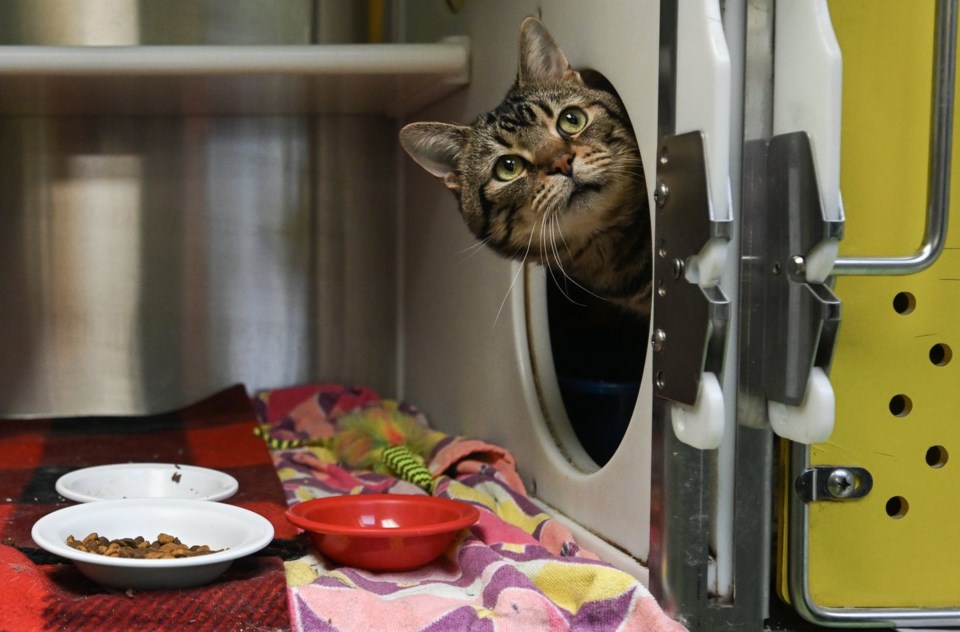Adopting a pet can enrich your life in countless ways, but it's important to budget properly for costs now and in the future.
Most people researching and budgeting for a new pet typically view food and vet costs as the two main expenses.
When it comes to finding a veterinarian, comparing prices and shopping around is smart, said Shannon Terrell, NerdWallet Canada’s spokesperson.
“There is no shame in being upfront with a potential vet and asking about their fee structures," she said.
"You’re going to want to inquire about the fees for general exams, the things that we anticipate. And then any supplements or medications that you expect you’re going to need to pay for on a regular basis — like that flea, tick, heartworm medication for dogs.”
Young people in particular might forget to budget well into the future, which includes end-of-life care for a senior animal, said Cindy Marques, a certified financial planner and director at Open Access Ltd.
Older pets may have chronic conditions with expensive medications, require assistive devices such as ramps, or need surgery. Budgeting for a pet’s whole life is a serious consideration, she added.
“There’s very long-lasting consequences to having someone who’s financially and medically dependent upon you,” she said. “Look at it as family planning at the end of the day.”
Recent inflation on pet food and products has been above overall inflation in Canada, increasing almost 13 per cent from 2022 to 2023, according to PetFoodIndustry.com. That's far above the two per cent pre-pandemic price growth seen from 2019 to 2020.
“We talk about headline inflation a lot, but I like to remind people that not all inflation is created equal,” said Terrell.
“Although headline inflation might be moving in a certain direction, it’s going to look vastly different across the different spending categories.”
As for pet health insurance, it may not be necessary for everyone, Marques said. Pet owners need to review policies carefully, looking at the costs of the premiums and deductibles as well as how many health services the policy covers, and weigh the chances of a catastrophic cost at some point.
Premium calculations are different for every animal whether it’s a cat or a dog, or even specific to some dog breeds that tend to have more health problems.
“I am an adviser, and I’m also my chief insurance adviser,” Marques said. “And I’ve got insurance on myself and my spouse, but I don’t have it on my cat.”
Cats are probably less likely than dogs to suffer an accident or swallow something that requires surgery, she noted. Instead of insurance, she opted to put aside money every month into a separate account to save for emergencies.
“It just takes a little bit of math and foresight here to weigh the pros and cons,” Marques said.
“You’re either going to self-insure by saving up in advance. If you can’t self-insure and you feel worried about a situation that might happen, ... that’s where insurance plays a role.”
Aside from the major responsibility of food and health care, owners need to factor in other lifestyle costs — and there are many, Terrell pointed out.
Training might be necessary if your dog develops behavioural issues, or if you’re just starting with a puppy. Professional sessions are not cheap, Terrell said.
And your travel plans are about to get a lot more complicated — and expensive.
“If you’re taking your pet with you when you travel, there are costs associated with that, or if you’re leaving them at home, that’s when we have to think about pet sitting,” Terrell said.
“We have to think about boarding our dog at a kennel, dog walking, or, again, having somebody you know coming into your home and actually staying with your pets.”
Airfare, airline-approved carriers, spill-proof bowls, identification tags, hotel fees, vaccinations, microchipping, veterinary documentation — there are a wide range of requirements depending on your destination, accommodation and transportation. To travel with your pet, extensive research is critical, Terrell said.
The last extra cost that new owners might not consider: toys.
For dog owners, particularly with large breeds, it’s not uncommon to bring home a $40 toy and watch your pet rip it to shreds in minutes.
“I have a German shepherd, and she decimates her toys,” Terrell said. “So we go through a lot of toys with her. And these toys say they’re going to last a certain amount of time, and they don’t.”
Pick up cheap toys from the dollar store instead, Terrell recommended, or try do-it-yourself options. Searching online for DIY cat or dog toys returns countless blog posts and videos with suggestions.
“One of the things we do to keep (our dog) stimulated and occupied is we grab an old towel, we hide a bunch of her treats inside of it, and then we roll the towel up and we pretzel it into all kinds of shapes,” she said.
“And she’s got to puzzle it out. We don’t need to be spending $50 per toy for our dogs. They don’t know the difference.”
This report by The Canadian Press was first published Sept. 3, 2024.
Nina Dragicevic, The Canadian Press



